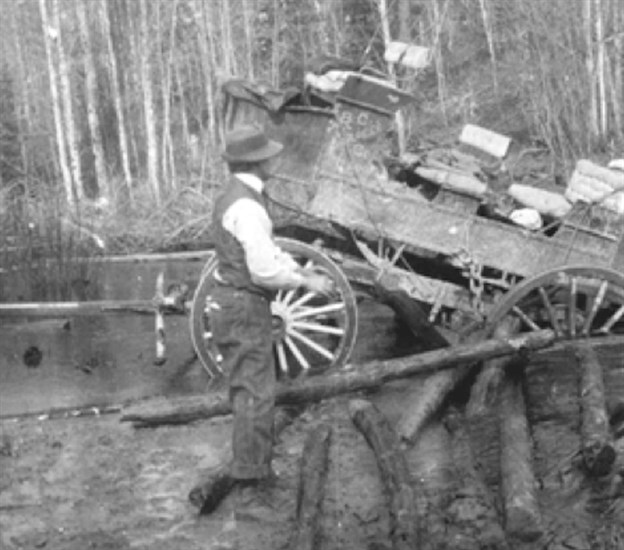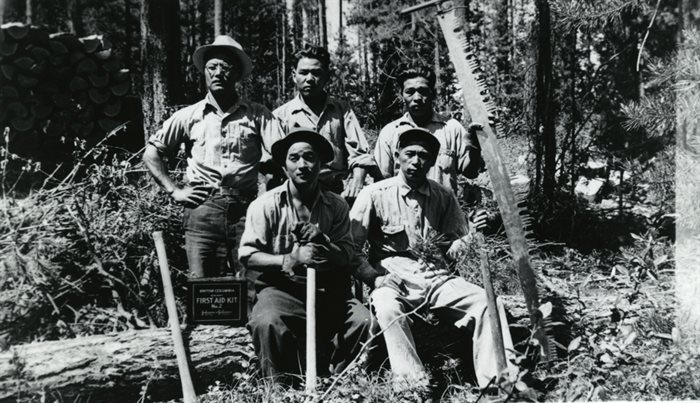BC’s first trans-provincial highway stalled before it reached the Okanagan

Before there was the Cariboo Wagon Road to Barkerville, the BC government started building a road to the Okanagan after gold was discovered in Rock Creek in 1859.
“It was hard to collect taxes and provide supplies for the miners who rushed in to the area,” states a publication called ‘Road Trip: From Trails to Highways in the Okanagan.’
“So BC Governor James Douglas hired Edgar Dewdney to build a trail from Fort Hope on the Fraser River to Rock Creek, passing over the rugged Cascade Mountains and along the Similkameen Valley.”
There had been trails through the Cascades for hundreds of years, established by First Nations trading goods between the Interior and the Coast.
Those were followed and new routes were built by the fur traders.
But moving goods took more than a trail with logs or makeshift bridges over creeks.
Known as the Dewdney Trail, construction of an actual wagon road began in 1860.
It was a 1.3 metre (four foot) wide corduroy road (meaning logs were laid across wet places).
The first leg on the route to Princeton, starting at Hope, was finished the following year at Rhododendron Flats, just inside what is now Manning Park.
It was 25 miles long and it “was the first and last section of a wagon road to the Rock Creek goldfields as the Rock Creek rush petered out and the miners headed for the Cariboo,” according to a BC government publication called ‘Frontier to Freeway: A short illustrated history of the roads in British Columbia.’
Gold was discovered in Barkerville in the summer of 1862 and that wagon road was finished in 1865.
That didn’t mean the Southern Interior route was totally abandoned.
“In 1861, the (Dewdney) trail was extended to Rock Creek,” Frontier to Freeway says. “In 1865, it was extended again to Wild Horse Creek in the East Kootenays. This narrow, 290-mile (467-kilometre) trail could be considered the first provincial highway,” according to From Trails to Highways.
While the trail may have extended across the province, it was by no means a road.
The road from Hope to Princeton, now Highway 3, did not actually open until Nov. 2, 1949.
READ MORE: 70 years ago, the Hope-Princeton Highway opened, forever changing the Okanagan
There were work gangs on the road during the Depression of the 1930s and Japanese internees during the Second World War.
“At the outbreak of war with Japan, the Canadian government saw the completion of the unfinished Hope-Princeton Highway as an opportunity to be the alternative route to the Trans-Canada Highway in case of sabotage,” Historic Place Names says. “The goal was to successfully connect the towns of Hope and Princeton, a distance of 133 kilometers, through the Cascade Mountains.
“At first progress on the route was slow and work conditions were harsh due to a lack of heavy equipment deployed to the project. Men were expected to scale treacherous rock faces using ropes, cut down hillsides, fill in low areas, blast rocks using dynamite, and build and install log culverts over 30 meters long. Almost all work was done using manpower and hand tools – shovels, picks, and mattocks – until mechanical equipment such as bulldozers and gas shovels arrived.”
READ MORE: New time travel video shows Highway 3 from Princeton to Osoyoos in 1966
By the end of the war, the road was still not finished so the work was turned over to a contractor who took another four years to complete the task.
To contact a reporter for this story, email Rob Munro or call 250-808-0143 or email the editor. You can also submit photos, videos or news tips to the newsroom and be entered to win a monthly prize draw.
We welcome your comments and opinions on our stories but play nice. We won't censor or delete comments unless they contain off-topic statements or links, unnecessary vulgarity, false facts, spam or obviously fake profiles. If you have any concerns about what you see in comments, email the editor in the link above.





